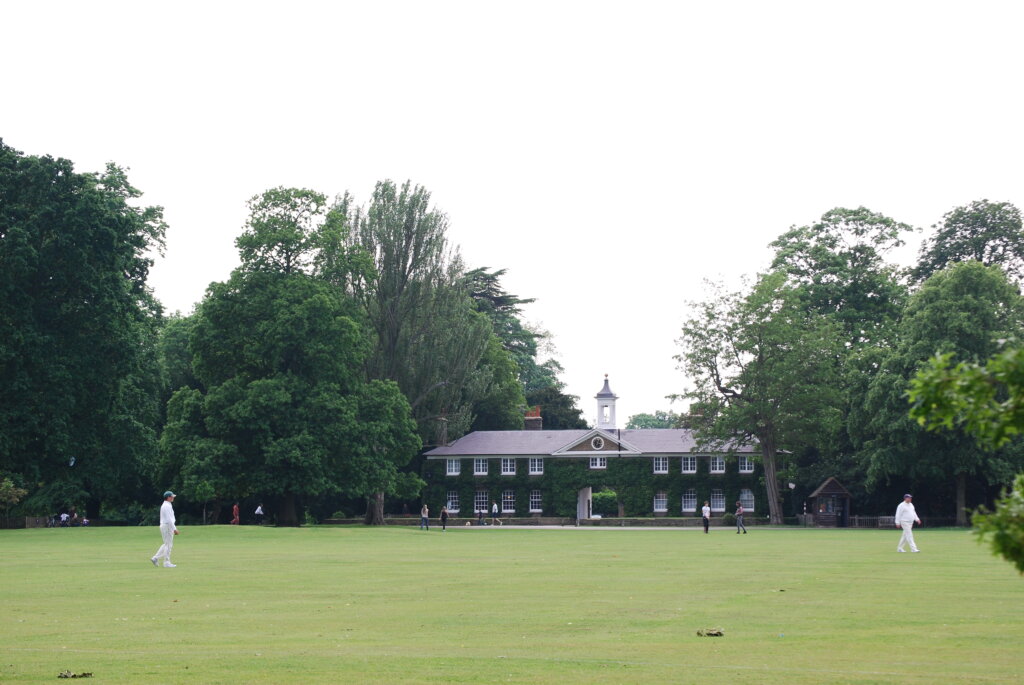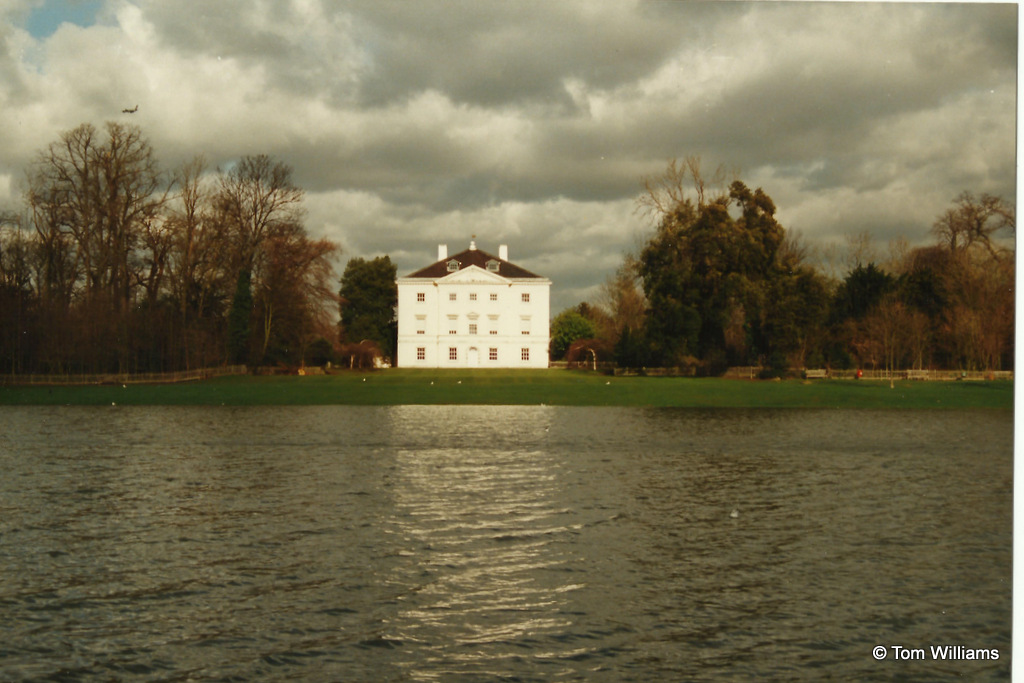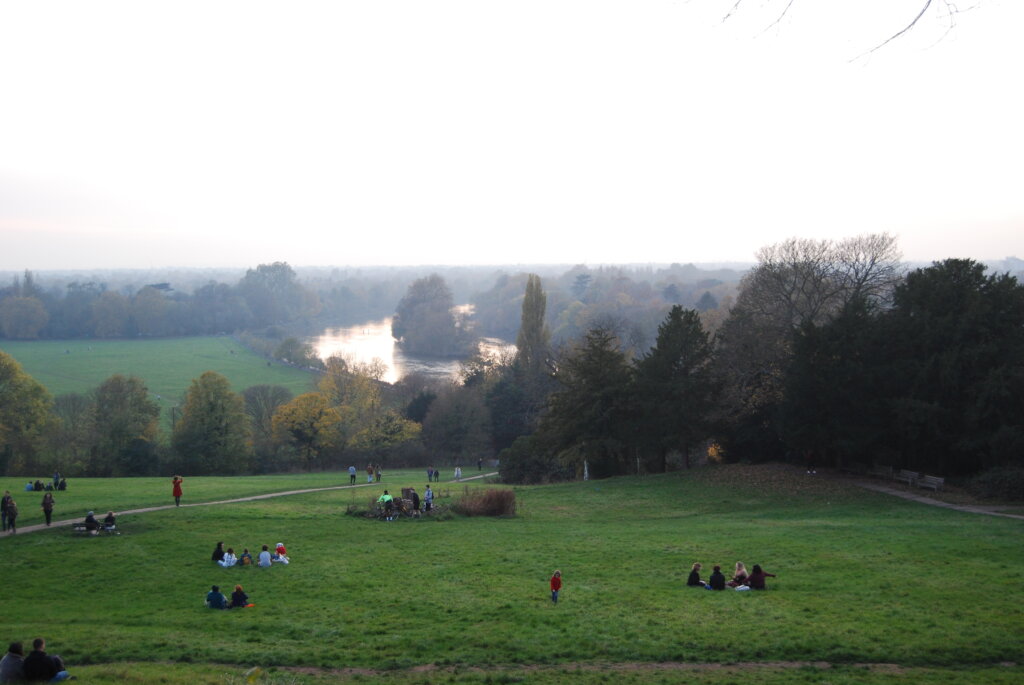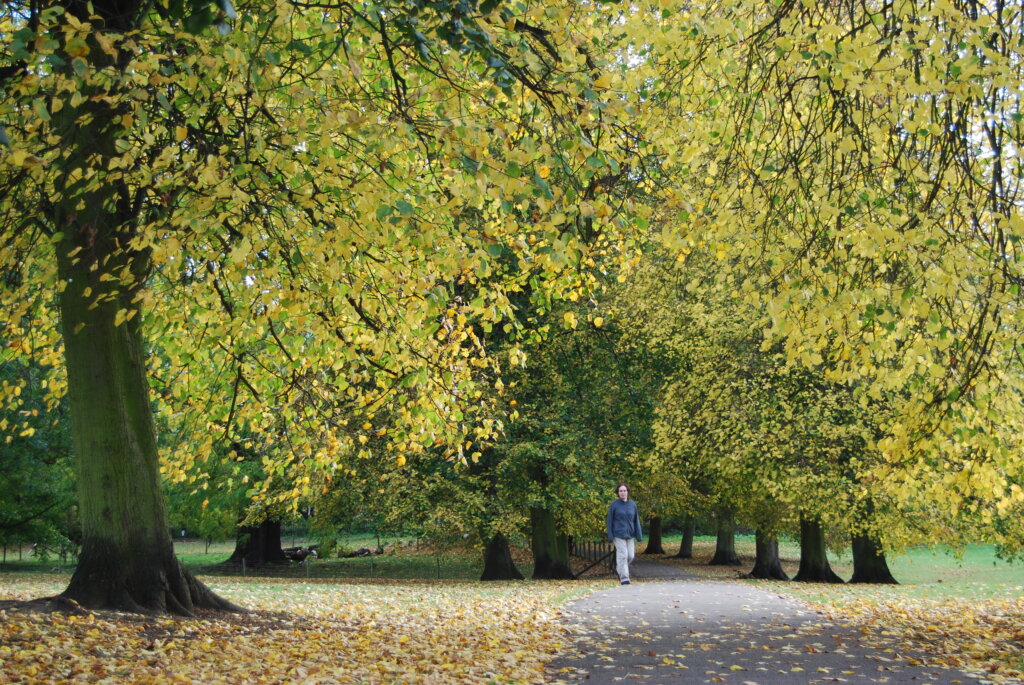
Marble Hill House – What happened to the house after the last private owners left?
Last week I wrote about Marble Hill House, the beautiful Palladian villa built for Henrietta Howard in the first half of the 18th century. After her death, it passed to her nephew and then her great-niece before being rented out to a succession of tenants (including Mrs Fitzherbert, the mistress of George IV). I’m very pleased to be able to give you Penelope Williams’ (no relation) account of what happened after that.
Last Private Owners
The last private owners of the house were General Jonathan Peel and his wife Lady Alice Peel. They lived there for 62 years – longer than anyone else. General Jonathan Peel was the brother of Sir Robert Peel, a Prime Minister, and today famous as the founder of the Metropolitan Police Force.
General Jonathan Peel was also a politician and was MP for Norwich and Huntingdonshire. He served as a secretary of state in the war office and was famous for breeding race horses. His horse Orlando won the Derby in 1844.1

Failure to Sell the House and Plans for Redevelopment
When his widow Lady Alice died in 1887 her heirs were unable to sell the house and it was left empty for more than 14 years. When the house could not be sold to a private individual it was marketed as a development opportunity.
Why did no-one want to buy the house as a private home? There were many reasons. The house may have been seen as at risk from flooding and the building up the embankment would have been a considerable expense. The size of the house was also a problem. It was too big for an ordinary family and too small for a grand house. The landed gentry were gradually becoming poorer. Agriculture which had supported the large country house was in decline because of competition from the United States. Taxes were increasing. Death duties were first introduced in 1894 along with other legislation.

Country Life Illustrated contained an article in July 1900 lamenting Marble Hill’s dilapidated air: –
“The gardens and groves are a very tangle, as the house has stood untenanted since the stable clock stopped one morning at half past nine, 14 years ago.”2
Unbeknown to them the house had actually been sold two years before in 1898 to William Cunard, a member of the famous shipping family, and his three sons for redevelopment.1
In June 1901 the Wigan Observer and District Advertiser reported that: –
“Marble Hill at Twickenham is soon to pass to the hands of the builders, and the home of Pope’s Chloe will become a street of suburban villas.”3 [Chloe was Pope’s name for Henrietta Howard.]
By the summer of 1901 infrastructure works had begun. Machinery and building materials were on site and roads and sewers under construction.
This was a time of rapid urbanisation particularly in London. St Margarets station was opened in 1876 and that meant substantial building in the area near Marble Hill, which was developing as a commuter suburb. Many estates were being bought up for housing. The Cunard family had also purchased Lebanon House and Orleans House to the west of Marble Hill. The nearby Cambridge Estate had recently been built upon.
The view from Richmond Hill
There were however a lot of objections to the redevelopment proposals, both locally and nationally. This was partly because Marble Hill was a key part of the famous view from Richmond Hill.4 Richmond at the time was a place where many Londoners would to go for day trips and excursions on the river. Marble Hill would have been well known as the home of Henrietta Howard, Lady Suffolk who also had a role in Sir Walter Scott’s popular novel – The Heart of Midlothian. He describes the splendid avenue of trees leading to the river walk. 5
The view from the top of Richmond Hill had been much admired for many years and had been an inspiration to many well-known writers and artists: artists such as JWM Turner who had lived nearby in Sandycoombe Road and Joshua Reynolds who had lived in Wick House at the top of the hill in 1788.7
There is a memorable description by Sir Walter Scott in The Heart of Midlothian and a well-known sonnet by Wordsworth written in praise of the nightingales which used to sing there. This is from Sir Walter Scott.
“A huge sea of verdure with crossing and interesting promontories of massive and tufted groves, tenanted by numberless flocks and herds, which seem to wander unrestrained, and unbounded, through rich pastures. The Thames, here turreted with villas and there garlanded with forests, moved on slowly and placidly, like the mighty monarch of the scene, to whom all its other beauties were accessories, and bore on his bosom a hundred barks and skiffs, whose white sails and gaily fluttering pennons gave life to the whole.”
There are three pictures of the view in the house today – in the Tetrastyle Hall and the Breakfast Parlour.

Although the house itself was no longer visible from the top of the hill, the woodlands on the estate were a key feature situated as they were on the bend of the river. The debates were centred on protecting the Middlesex side of the river as Lord Dysart, of Ham House, had agreed to protect the property on the Surrey bank in return for an agreement on use of Lammas lands at Ham.5
After a long campaign, Parliament in 1902 passed the Richmond, Petersham and Ham Open Spaces Act. 9 This still protects the view to this day.

On 19 July 1901 a conference was organised to discuss what could be done about the Marble Hill Estate. The conference was attended by representatives of local authorities and preservation societies including London, Surrey and Middlesex councils, the Richmond Corporation, the Teddington Urban District Council and other charities and individuals. Following the conference these organisations got together a total sum of £72,000 to buy the estate from the Cunard family. The Cunards would have made more money if they had developed the estate but the huge public opposition would have influenced their decision to sell. The London County Council put up half the money and agreed to take on the future care and maintenance of the estate.10
Marble Hill Park opens in 1903
The park was first opened to the public in 1903. Before the opening, the LCC carried out some remedial works to the grounds and cleared away all signs of the infrastructure works. But the house remained closed, apart from the ground floor where there was a tea room. You can still see signs of the original counter on the floor in the Tetrastyle Hall. The housekeeper’s room which is now the entrance and shop was used as a changing room for the teams playing cricket or football in the park. It was approached from the outside by way of the toilet block. A service wing including Henrietta’s china room was demolished in 1909 as it was in poor repair.
The first floor was turned into a flat for the Park Superintendent. The dressing room and Miss Hotham’s bedchamber were partitioned creating an extra bedroom and a bathroom leading off the kitchen which occupied the ante chamber. 1
In 1916 during the first world war Marble Hill was a recruiting station.
Sheep were grazed on the lawn until the 1930s.
The opening ceremony took place during a prolonged thunderstorm according to the Surrey Comet and had to be delayed by an hour and half.11

House first opens to the Public 1966
The whole house was not opened to the general public until 1966. This was as a historic house museum opened by the GLC which replaced the LCC in 1965.12 Why was it not open to the public before?
When the house came into the ownership of the council in the early Twentieth Century there was very little interest in historic houses. A wave of destruction began in the early 1900s but most people were not that concerned at the losses because many saw the houses merely as a symbol of the old order which was then in decline. During the first half of the 20th century many historic houses were lost. It was not until later, after the second world war, that more people began to recognise their value.13 Evelyn Waugh, whose Brideshead Revisited has been seen as a lament for the lost age of the country house, writing in his introduction to the 1959 second edition of the novel said:
“It was impossible to foresee in the Spring of 1944 the present cult of the English Country House. It seemed then that the ancestral seats which were our chief national artistic achievement were doomed to decay and despoliation like the monasteries in the Sixteenth Century. So, I piled it on rather with passionate sincerity. Brideshead today would be open to trippers, its treasures re-arranged by expert hands and the fabric better maintained than it was by Lord Marchmain.”
The National Trust was formed in 1898 as a charity primarily for the preservation of landscapes of outstanding beauty or interest. It was only later that this included historic houses. After the war many country house owners were struggling. The Marquess of Bath had a big success when, in 1947, he became one of the first to open up his house at Longleat to the public. He did this to help pay death duties on his estate. The resurgence in interest could have led the GLC to decide to open up Marble Hill.14
The Daily Telegraph Architectural Correspondent writing in the Daily Telegraph on the day of the house opening 14 July 1966 stated that “The survival of the house at that time probably a result more of chance than policy.” 12
The very first guide to the house was put together by the newly formed Georgian Group in 1939, just before the second world war. Then they recommended:
“submitting it to a thorough and careful restoration so as to render every part of it available for the use, enjoyment and instruction both of the general public, and of the student of architecture and interior decoration”.
In 1951 the whole of the second floor had to be gutted because of dry rot. Some of the architectural features were moved to the lower floors at that time.
When the GLC first took over, they carried out a major restoration with the aim of bringing the house back to the original Eighteenth century design. The most significant alterations to the appearance of the house outside were to the South Front including reducing the length of the windows back to their original on the first floor and removing the cast iron balconies, which were thought to have been put in sometime early in the Nineteenth century. The restoration took two years and cost £48,830. The aim at this time was that the house would be used for lectures and meetings of cultural societies. Appropriate antique furnishings and paintings were acquired. The first exhibition was entitled The Countess of Suffolk and Friends, an exhibition of paintings.
The Daily Telegraph architectural correspondent writing about the opening compared the restoration to that of the Grand Trianon at Versailles. But the correspondent in the Glasgow Herald 15 wrote that the only drawback was the difficulty of imagining Lady Suffolk’s daily life there – while praising the restoration of the Great Room on the first floor “all white and gold with its cube of 24 feet lamented the cool blank rooms which resisted habitation”.

In 1986, with the abolition of the GLC, the house passed into the ownership of English Heritage, who look after it today. Over time the house has been filled with eighteenth century paintings and furniture so that today we can really imagine Henrietta Howard living here and entertaining her wide literary, political and social circle in its rooms.
References
1 Marble Hill House and Its Owners – Marie Draper and WA Eden
2 Country Life Illustrated – 24 February 1900
3 Wigan Observer and District Advertiser – 19 June 1901
4 Gentlewoman – Saturday 9 August 1890
5 Marble Hill – The Heart of the View from Marble Hill – Julius Bryant
6 London Evening Standard – Monday 1 June 1903
7 Richmond Hill and Marble Hill – DS Macoll – The Architectural Review 1901-07 Volume 10
Issue 56
8 The Architectural Review Volume 34 (July – December 1913)
9 Hansard – Richmond, Petersham and Ham and Open Spaces Act 1902
10 Opening of Marble Hill Twickenham – 30 May 1903 – London County Council
11 Surrey Comet – 3 June 1903
12 Daily Telegraph – Peter Fleetwood- Hesketh -17 July 1966
13 Wikipedia – Destruction of Country Houses in Twentieth Century Britain
14 How to Fund Stately Homes in the Twenty-first Century – CNN Style
15 Glasgow Herald – 15 August 1966
